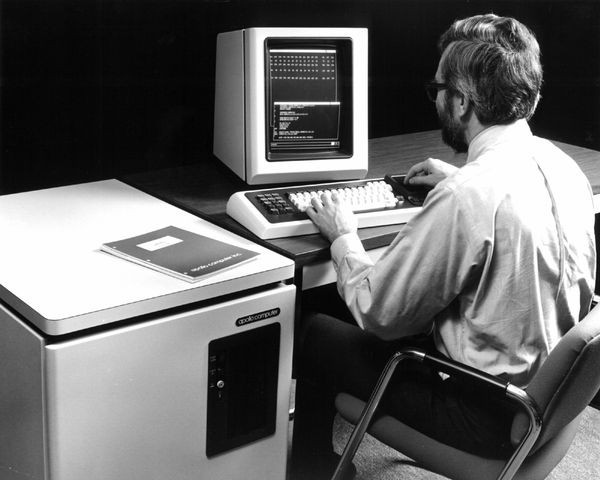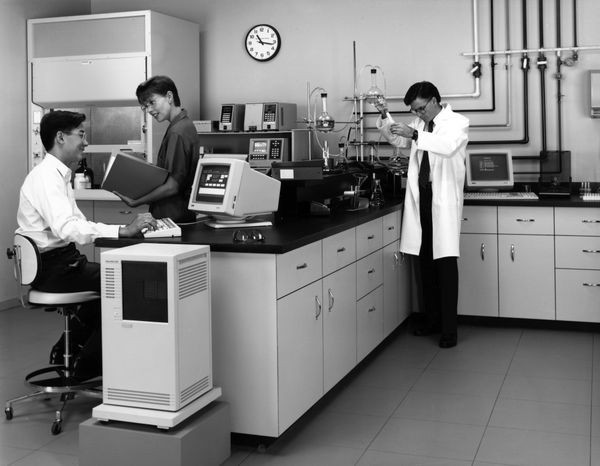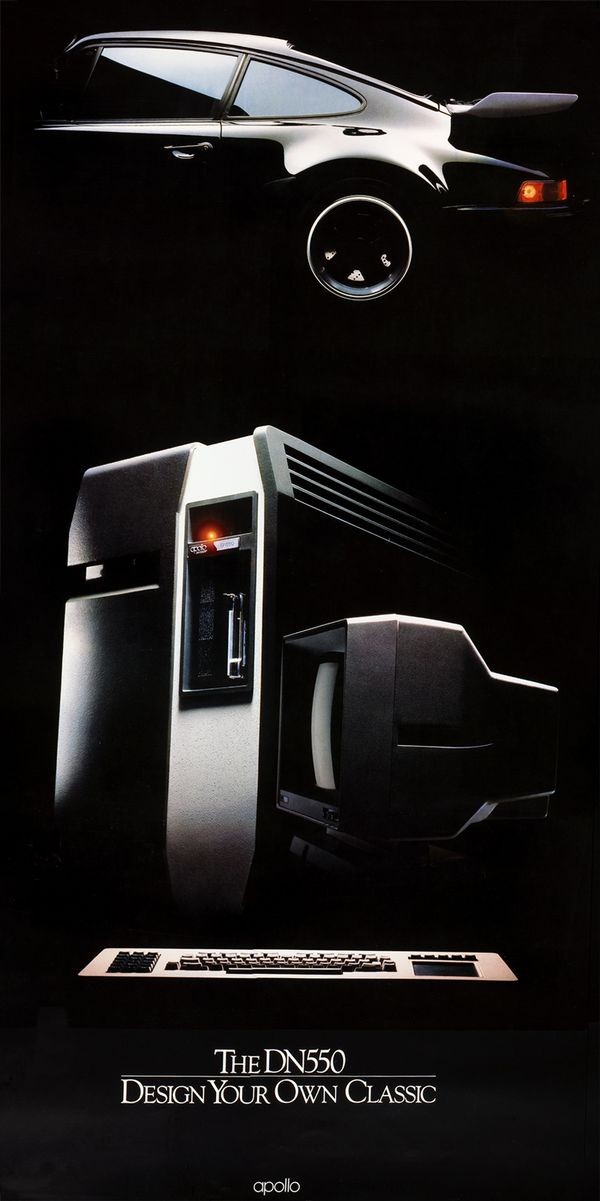Graphics Workstations
Apollo Domain DN100 workstation
This workstation used two Motorola 68000 microprocessors and ran a Unix-like operating system. Apollo was the dominant maker of scientific workstations until the late 1980s. These high-performance graphics-oriented computers were used for computer aided design, scientific simulations, and general engineering work. Apollo was acquired by Hewlett-Packard in 1989.
Graphics Workstations
Early computers were mostly text-based machines. Yet design is a highly visual activity. To help bridge that gap, companies developed specially designed graphical workstations.
Research groups and universities built the first workstations, such as MIT’s 1970s LISP Machine. Large corporations were key customers for graphical workstations, using them for electronic and mechanical design because personal computers were too slow and lacked sophisticated graphics.
As personal computers grew more powerful, however, the rationale for dedicated workstations eroded. In the 1990s software companies began adapting design applications for PCs using Windows.
DEC RTVAX 3300 in laboratory use
This publicity photo shows a “Real Time VAX” being used to acquire data in a laboratory. Other applications included automation of manufacturing plants and control of particle accelerators in physics labs.
View Artifact DetailApollo DN550 poster
The Apollo DN550 workstation was one of the most powerful graphics workstations available in the 1980s, leading to the natural comparison to a sportscar!
View Artifact Detail

